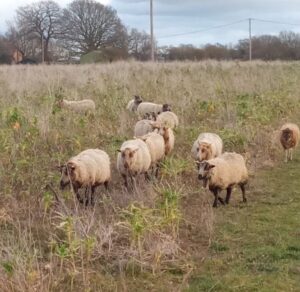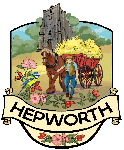
Our small flock of forty or so Shetlands live on our tiny farm on the Suffolk/Norfolk border. The farm has always had a mixed arable rotation, but with only 80 acres to work with it gradually made more and more sense for us to make a change and enter the whole farm into a five year Countryside Stewardship Scheme.
Now our farm is a patchwork of herbal leys, clover mixes, flower rich margins, grassland buffer strips and winter bird seed mixes. As well as providing important nectar sources for pollinators, seeds for overwintering farmland birds and habitat for a variety of wildlife the new plants are regenerating the land by adding nutrients and improving soil structure. What I hadn’t really thought about when we signed up was the potential partnership that would be formed between the new crops and our Shetland flock. There are strict rules surrounding the management of the different plant mixes, and all of them must be left alone for flowers and seeds to develop at various times throughout the year. However, we are finding that it is possible to manage the time slots whilst gradually moving the sheep around the farm. They help to keep on top of growth and benefit from the wide variety of grasses, clovers and herbs.
In the middle of April we top the last of the growth on the winter bird seed plots. The mix has been in the ground for a couple of years and all of the seed has been taken. During the first year, birds such as yellowhammers, reed buntings and partridges feed on spilt seed from quinoa plants, triticale wheat, sunflowers and mustard seed. In the second year they rely on seeds from fodder radish and kale and this is where the Shetlands come in.
Once the seeds have been taken the sheep can go in and tidy up for us. The kale and fodder radish leaves provide a high protein food source for the pregnant ewes and a pick me up for the tired out ram. As the plot has been left alone for a couple of years there is also a build up of grasses and weeds underneath the main crop. It is a lot easier for us to clear the field and start again once the stalks have been stripped and nibbled bare. The Shetlands also add their manure to the land whilst they are there. With their small hooves and lighter weight they are gentler on the land than larger breeds, which is important when we are trying to avoid compacting the soil. As part of our change, we no longer add manufactured fertilisers to the land or use chemical sprays so the sheep can feed on what is gradually becoming organic fodder. So far the partnership is working well, with one small snag, Kale stalks provide nice scratching posts so we have lost some of this year’s fleece crop in the field! Something to think about for next year.
Once the flock has stripped the kale the ewes come into paddocks near to the farmhouse to lamb, whilst the boys head off to rough pasture elsewhere on the farm for a few weeks. Next stop will be the herbal leys as the spring growth gets going.
Kath Shearer – Lings Shetlands, Suffolk
www.freerangefibre.co.uk

